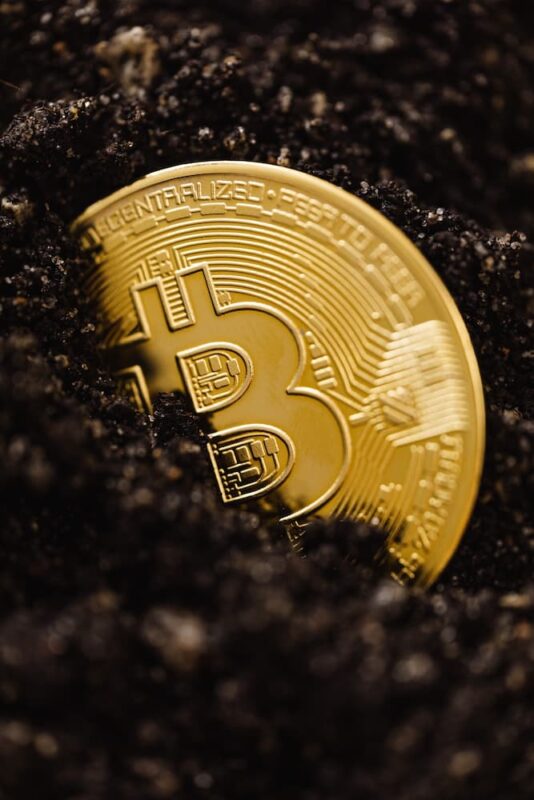The word “blockchain” translates from English as “blockchain. This name quite accurately reflects the essence of blockchain. It is compared to a necklace, each bead (block) of which is a record of action, and the chain cannot be broken. Blockchain is an unbreakable digital record of actions.
Each block is a specific numeric code (not just numeric), and any subsequent block contains information from the previous block. Thus, we should consider it to be not only a database, but also a way of encrypting and transmitting data.
Around the world, this technology is actively used to transfer cryptocurrencies. If you send a cryptocurrency over a blockchain, thousands of computers around the world will confirm and store all information about the transfer.
The process of sending a transfer takes minutes. Blockchain money cannot be lost or tampered with. There are no third parties or intermediaries, and the accuracy of calculations is guaranteed by the mathematical accuracy of the technology.
Blockchain can be used not only for cryptocurrency transfers. It is used in the banking industry, cybersecurity, and identity verification. Basically, it’s just a technology for organizing all sorts of data.

Blockchain and bitcoin
Blockchain technology is well established in bitcoin, a popular and expensive cryptocurrency. Its example showed how to organize the mass calculation of the hash (the now generally accepted measure of the integrity of an electronic block). The creator of the first block only needs to create a unique formula and calculate a “parent” based on it.
Bitcoins apply the following rules, typical of blockchain in general:
- Each hash is unique; when another transaction is calculated, another hash is created, unrelated in value to the previous one.
- It is impossible to recover the original number from the hash, which rules out brute-force hacking.
- The frequency of a new hash appears is set on the level of a formula and can only be changed by the creator of a particular system.
- The database of blocks is public and at the same time is fully protected from hacking.
- Calculations are performed by users on their home computers or with the help of special equipment.
- A minor disadvantage of the existing bitcoin system is the visibility of all transactions. Every owner of this cryptocurrency wallet sees what amount was transferred and where. But it is impossible to find out who is the owner of this or that purse, complete anonymity is preserved.
Prospects of development
The blockchain system can’t be disregarded because of its enticing list of benefits. The prospects are too rosy when the technology is implemented globally. The desire to develop the economy inevitably leads to the consideration of new directions.
Blockchain allows solving several problems at once:
- Significant reduction of time for financial procedures.
- Reduction of material costs by eliminating the need for powerful servers, expensive data storage complexes.
- Eliminating the monopoly of big companies that try to manipulate the market with big capital.
Optimists predict liberation from corruption and the elimination of money laundering and other financial crimes. They believe that the transparency of the system will force all of its users to comply with the law, because every transaction is open. For the government, the prospect is critical because there is no legal framework for the transition to blockchain.
Contracts, monetary transactions, paperwork – forms of this or that economic infrastructure. When bitcoin was introduced, people rushed to test blockchain’s potential based on the criteria listed above. Like any other new project, blockchain took time to emerge from the shadow of cryptocurrencies. With in-depth research, experts have been able to unravel the exorbitant potential behind the decentralized ledger.
Blockchain technology has begun to spread its wings in exploring applications in fields other than cryptocurrency. Decentralized technology has brought needed changes to the core of the industry ecosystem. Education, healthcare, supply chains, logistics, media and entertainment, sports, etc., have gracefully welcomed blockchain technology into their core systems.
The applications of blockchain are endless. Blockchain seeks to give complete freedom to users, to create projects on their own, and to make money from their idea. The technology infuses the field with a high class of security, transparency, and immutability of the essence of the economic system.
Fields that have been qualitatively affected by blockchain
The number of spheres where blockchain technology is used is limited only by the imagination of software developers. And they are not always related to cryptocurrency.
Information technologies
The main direction in which blockchain can be in demand is providing data safety. In the modern world, they are the main value.
Blockchain functions automatically. Chains of blocks are verified using built-in algorithms. Information is stored by each member of the network. Therefore, hacking or destroying one node (node) will not affect the entire system. Authentication is continuously verified by checking hashes of “neighbors”. Even if one element is “forged”, it will not pass verification and will be replaced by an authentic one.
Selling goods and services
International trade is an application area where blockchain has almost unlimited benefits. It is considered one of the trends that will determine the development of retail over the next 10 years.
The information industry giant IBM is paying close attention to blockchain. The company’s programmers are implementing a project aimed at controlling the quality of food and increasing its safety. Retailers as well as food producers from around the world are already interested in it.
Also today online casinos that support cryptocurrency operations and blockchain technology are becoming more and more popular and in demand.
Getting an education
Blockchain provides guaranteed data security. Transaction records are stored on all nodes, and they cannot be deleted or overwritten. You can only add a block that contains replacement information. The blockchain can be used to keep records of education and degrees. As a consequence, any participant in the system will be able to verify the authenticity of the document, its author and the user who made the changes.So far, blockchain is rarely used in educational institutions. But there are already examples.
Legislation and jurisprudence
Because data cannot be altered or erased, distributed networks can be used as a way to store legally relevant information. For example, contracts for the sale of real estate or works of art. Also, the fact of transferring the right to dispose of intellectual property objects can be recorded.
Medicine
Blockchain in healthcare institutions is an opportunity to make data processing simpler, faster and clearer. But the main obstacle is the low speed of data processing. When new blocks are added, information about them is verified by all the nodes. Therefore, the procedure takes a long time.The way out could be new blockchain algorithms with fast transactions.

